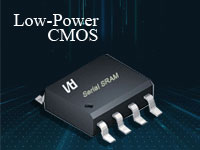Autonomous driving pushes up MCU demand
With the development of intelligent driving technologies such as ADAS and autonomous driving, vehicle and auto parts manufacturers have more demand for MCUs. IC Insights predicts that automotive MCU sales will increase by 1% in 2020 to close to 6.5 billion U.S. dollars. Then, the device will increase gradually from 2021 to 2023, and the final forecast will reach 8.1 billion U.S. dollars.
In the field of ADAS and autonomous driving, the role of MCU is mainly Safety Host (safety host). It mainly cooperates with the high computing power MPU or SoC responsible for perception, and calculates the control variables according to the current vehicle's motion status and perception goals, such as the judgment of the angle, torque signal or alarm logic output to the chassis domain. In terms of main frequency, ADAS MCUs do not pursue ultra-high main frequency, generally between 400MHz and 450MHz. The architecture will incorporate some heterogeneous acceleration units, such as network and AI accelerators. On the interface, it is mainly for the communication with SoC or MPU to increase the PCIe interface and more Ethernet channels. In terms of process, it will gradually transition to 28nm and 16nm.
In the whole process of the evolution of automobiles to intelligent systems, due to the increasing requirements for safety and environmental protection, there are higher requirements for MCUs. In particular, the architecture of automotive electronic control is increasingly adopting the execution architecture of domain controllers and numerous ECUs. Domain controllers require higher computing power, more powerful network interfaces, and lower power consumption. These are all important to chip companies. The R&D capabilities and chip process technology put forward higher requirements.
At the same time, intelligent driving technology puts forward requirements for the construction of automotive electronics software platforms. For example, the software cost of Tesla S series models accounts for more than 40% of the vehicle cost. The MCU ecosystem is very large, especially in terms of basic software, including peripheral drivers, operating systems, and information security and functional security mechanisms. Each part needs the support of professional ecosystem partners. For example, Infineon has in-depth cooperation with international first-line basic software providers Vector, Etas, etc. In addition, in terms of ADAS, TTtech has middleware developed specifically for Infineon AURIX MCUs, and Baselab also provides sensor fusion algorithms optimized for AURIX. With the widespread acceptance of the "software-defined car" concept, in-vehicle software will be further integrated with hardware such as MCUs and become an important part of the differentiated services of vehicle manufacturers.
In the field of ADAS and autonomous driving, the role of MCU is mainly Safety Host (safety host). It mainly cooperates with the high computing power MPU or SoC responsible for perception, and calculates the control variables according to the current vehicle's motion status and perception goals, such as the judgment of the angle, torque signal or alarm logic output to the chassis domain. In terms of main frequency, ADAS MCUs do not pursue ultra-high main frequency, generally between 400MHz and 450MHz. The architecture will incorporate some heterogeneous acceleration units, such as network and AI accelerators. On the interface, it is mainly for the communication with SoC or MPU to increase the PCIe interface and more Ethernet channels. In terms of process, it will gradually transition to 28nm and 16nm.
In the whole process of the evolution of automobiles to intelligent systems, due to the increasing requirements for safety and environmental protection, there are higher requirements for MCUs. In particular, the architecture of automotive electronic control is increasingly adopting the execution architecture of domain controllers and numerous ECUs. Domain controllers require higher computing power, more powerful network interfaces, and lower power consumption. These are all important to chip companies. The R&D capabilities and chip process technology put forward higher requirements.
At the same time, intelligent driving technology puts forward requirements for the construction of automotive electronics software platforms. For example, the software cost of Tesla S series models accounts for more than 40% of the vehicle cost. The MCU ecosystem is very large, especially in terms of basic software, including peripheral drivers, operating systems, and information security and functional security mechanisms. Each part needs the support of professional ecosystem partners. For example, Infineon has in-depth cooperation with international first-line basic software providers Vector, Etas, etc. In addition, in terms of ADAS, TTtech has middleware developed specifically for Infineon AURIX MCUs, and Baselab also provides sensor fusion algorithms optimized for AURIX. With the widespread acceptance of the "software-defined car" concept, in-vehicle software will be further integrated with hardware such as MCUs and become an important part of the differentiated services of vehicle manufacturers.
CONTACT US
USA
Vilsion Technology Inc.
36S 18th AVE Suite A,Brington,Colorado 80601,
United States
E-mail:sales@vilsion.com
Europe
Memeler Strasse 30 Haan,D 42781Germany
E-mail:sales@vilsion.com
Middle Eastern
Zarchin 10St.Raanana,43662 Israel
Zarchin 10St.Raanana,43662 Israel
E-mail:peter@vilsion.com
African
65 Oude Kaap, Estates Cnr, Elm & Poplar Streets
Dowerglen,1609 South Africa
E-mail:amy@vilsion.com
Asian
583 Orchard Road, #19-01 Forum,Singapore,
238884 Singapore
238884 Singapore
E-mail:steven@vilsion.com
